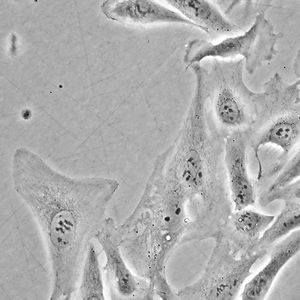Applications / Phase Contrast
Phase Contrast Microscopy
Learn About Phase Microscopy and Discover the Components Required
Learn and buy phase contrast microscopy solutions for visualising transparent matter without staining.

How Phase Contrast Works
To help understand how phase contrast functions we can follow the light throughout the system.
-
Light Source - Light starts in the microscope from the source usually a halogen bulb or LED used for transmitted light.
-
Condenser Shapes the Light – Inside the condenser is a small ring called a phase annulus. This ring restricts light, creating a hollow cone of illumination instated of a solid beam.
-
Light Passes Through the Sample – When the cone of light hits the transparent samples (such as cells), two types of light are produced:
-
Direct Light: travels directly through the clear background of the sample.
-
Diffracted Light: bends slightly as it passes through denser or more refractive structures within the specimen. The specimen imposes a small phase shift (change in timing) on the diffracted light relative to the direct light.
-
-
Objective Lens Creates the Image – The objective lens collects all light. Inside it, a phase plate is positioned to act primarily on the direct light:
-
It shifts the phase of the direct light, putting it slightly out of step with the diffracted light.
-
It dims the direct light to balance the intensities.
-
When these two adjusted light waves recombine, they interfere with each other areas where they cancel appear darker, and areas where they reinforce appear brighter. This interference transforms tiny, invisible phase changes into visible contrast, clearly revealing transparent structures in the sample.
This technique allows visualization of transparent specimens like living cells without staining, making phase contrast microscopy invaluable in biological and medical research.

Phase Ring Annulus (Left) Phase Objective (Right)
Microscopes for Phase Contrast

U2OS cells in phase contrast, transmitted light image with Axiovert 5
Samples for Phase Contrast
Phase contrast is great for viewing transparent, unstained specimens like live cells, but it's not ideal for thick samples or those with strong natural pigmentation, which can distort contrast.

.jpg)




